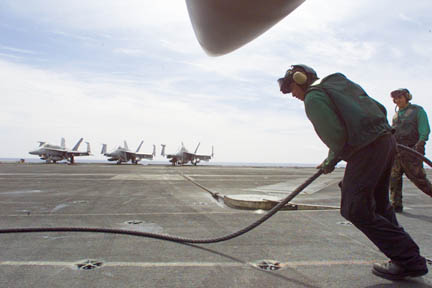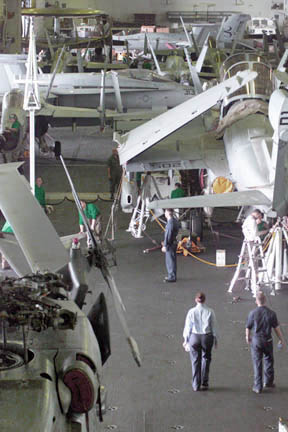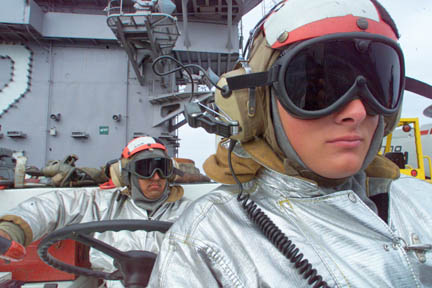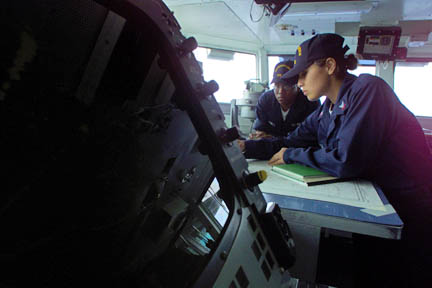

|
Ship is a flurry of
activity and noise
Editor's note: The USS Abraham Lincoln (CVN 72) arrived in Pearl Harbor yesterday on its way to the Western Pacific. As it powered toward the Hawaiian islands, Star-Bulletin photographer Cindy Ellen Russell was allowed on the Washington-based aircraft carrier to document crew members who make the ship run smoothly.Conversations don't exist on the flight deck of the USS Abraham Lincoln, as the F/A-18s command all the attention, with their rocket-fueled roars.
When crew members do communicate, they do it through hand signals or well-choreographed routines, going from what seems to be a quiet, meditative state to physical action and complete awareness.
Dressed in hues unexpected for the military, the crew dot the deck with jerseys of royal blue, taxicab yellow, chili-pepper red, grassy green, grape-candy purple, UPS brown and understated white -- each color specifying a specific task and command for that individual.
Inside the ship, the sound of metal, combustion, friction and impact reverberate periodically as a constant reminder that the USS Abraham Lincoln (CVN 72) is one of the world's largest warships. A Nimitz-class aircraft carrier, it measures 1,092 feet long, shoulders a flight deck of 4.5 acres, and houses 70 aircraft, 5,600 crew members and two nuclear reactors needed to power it.
Often referred to as a "floating city," the aircraft carrier comes complete with its own radio station (KRUZ), television studio, barbershop, chapel, post office (with its own ZIP code), library, Internet access room and workout areas.
Despite the amenities, crew members seemed to agree on the things they missed the most. "Food, family and friends," said CWO3 Mitchell Felipe of Lanai.

|

|

|

|